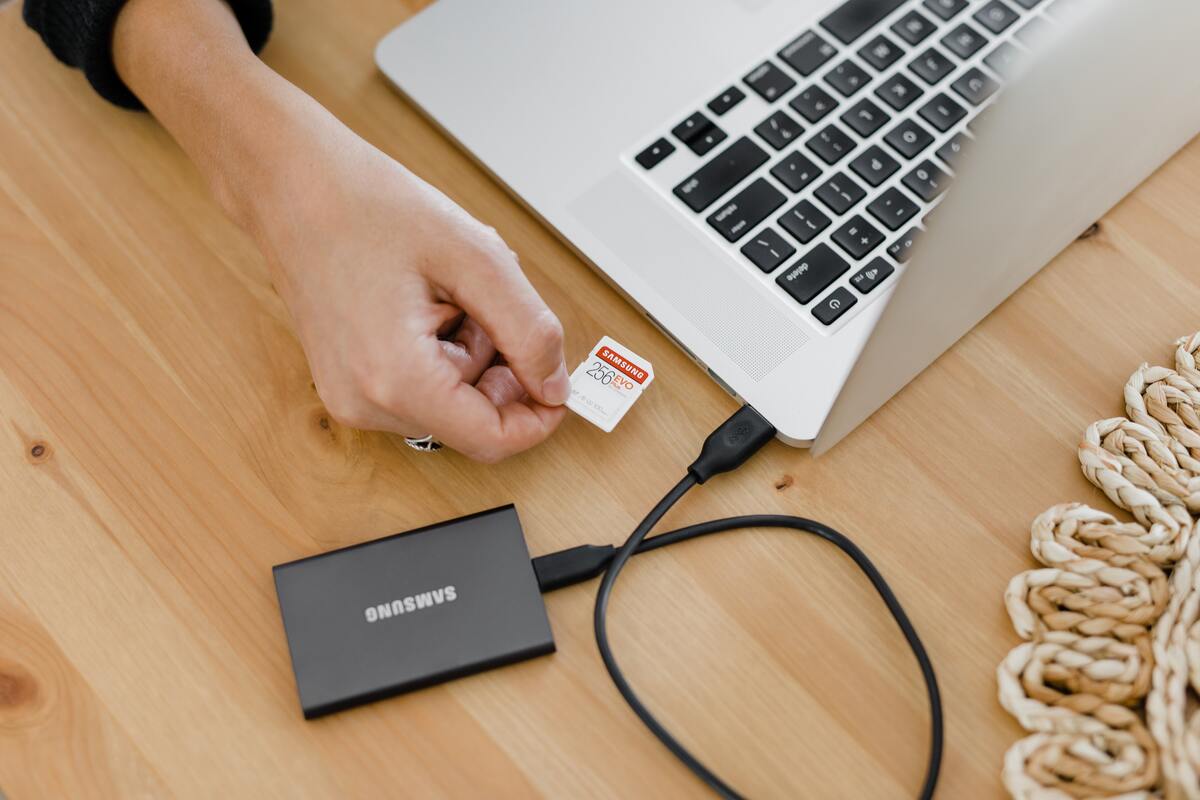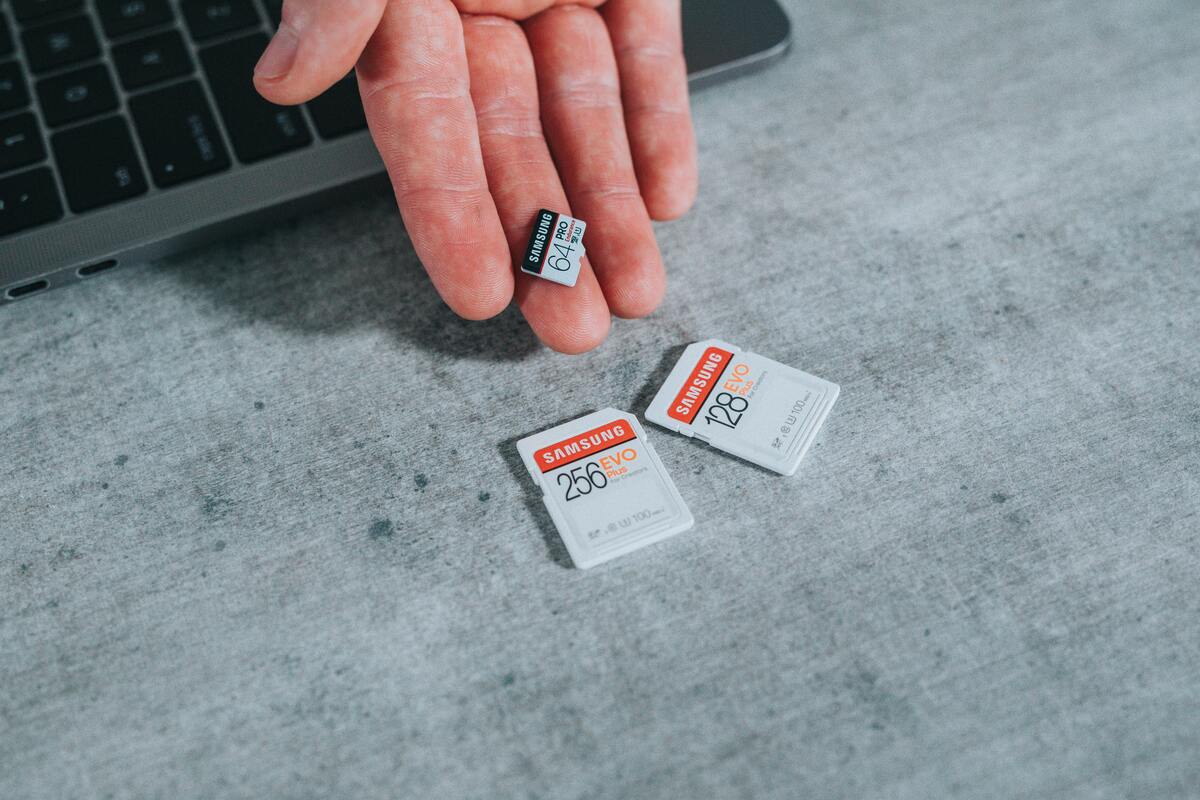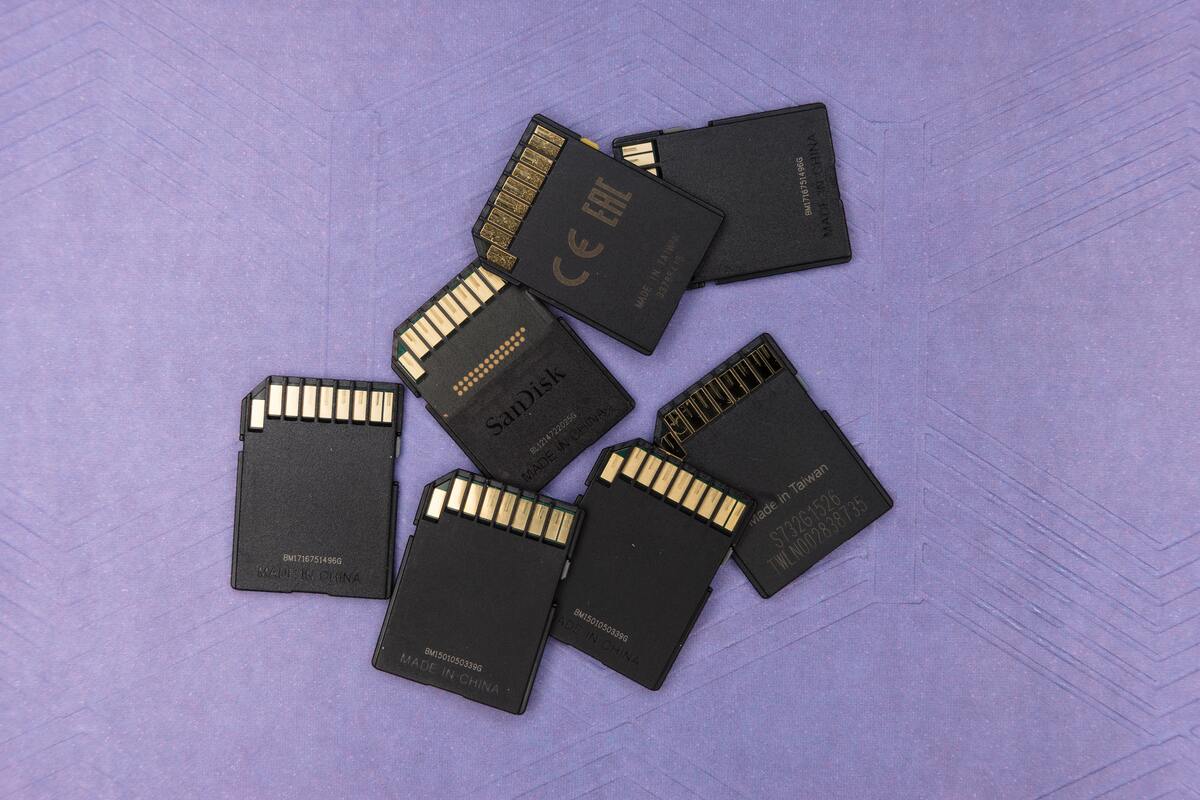SDHC vs SD vs SDXC: What Is the Difference & Which One Is Best?
Hire film gear from local filmmakers.

Hire film gear from local filmmakers.
Today's memory cards are a befuddling jumble of technical jargon; however, it may be easier to comprehend once you grasp the essentials.
The majority of today's modern devices utilize SD or microSD cards, which you can tell by glancing at your camera's card slot.
The storage space, is the most straightforward metric to comprehend (GB). It's natural to believe that the higher the figure, the greater, but this isn't always the case.
Using numerous smaller cards could save you money; however, you won't be able to live and die with a single card. Memory cards deteriorate, get lost, or encounter data leakage. Learn more about it by reading this piece.
Don't forget to check out all the other camera equipment you need!

What is the difference between SDHC vs SD vs SDXC?
A memory card’s capacity is determined by the file system used to store data designated by the type of card...
SD card
The Secure Digital Association (SDA) established a unique non-volatile memory card design used in wearable electronics, formally abbreviated as SD.
It is a detachable memory card that may be used to read and write massive amounts of data in mobile phones, cameras, smart devices, and other devices.
SD (secure digital) cards are the earliest and least popular and have a storage capacity of only 2GB.
SD cards have been widely used in various consumer gadgets for storing gigabytes of data at a low cost due to their compact size.
Digital cameras, game consoles, set-top boxes, home theatre equipment such as Blu-ray players, and home devices such as surveillance cameras all have them
SDHC card
SDHC memory cards (Secure Digital High Capacity or SD 2.0) are a memory electronic storage devices.
These vary in that they support volumes greater than 2.0 GB and various speed class ratings. SDHC (high capacity) cards have up to 32 GB of storage space.
SDHC storage devices are only functional with SDHC-compatible devices. They are a relatively new concept, so double-check your hardware before buying.
You may use the upgraded SDHC standard and the old SD memory card format if you have an SDHC-compatible camera, phone, voice recorder, reader, or camcorder.
High speed levels beneficial for photographers and videographers
Class 2, 4, and 6 SDHC speed classes promise data-writing speeds of 2, 4, and 6 MB per second. Such speed levels can be beneficial for photographers who need to take many photos in a short amount of time and can't afford to wait for their memory cards to catch up and for videographers who wish to film longer, higher-quality files.
Moves massive data easily
Other advantages also include the capacity to effortlessly move massive data without a network, at a reasonable pace, and on a reusable medium.
Unlike recordable DVDs or CD-Rs (including rewritable discs), memory cards have a far longer product lifespan of thousands of cycles, making data transmission more economical and durable.

SDXC card
In 2009, the Secure Digital eXtended Capacity (SDXC) format was developed.
The exFAT file system may hold up to 2 TB of data. SDXC cards are compact flash storage chips with more storage space than standard SD (Secure Digital) cards.
Smartphones, eBooks, digital cameras, camcorders, audio players, and laptops benefit from SD and SDXC cards for portable storage. The Extended Capacity (XC) format raises the maximal SD storage space from 32 GB (gigabytes) to 2 TB (terabytes), a 60-fold gain.
With SDXC cards, technicians were able to achieve a DTR (data transmission rate) of approximately 312 Mbps (millions of bits per second)
3 things to consider in a memory card
We've discussed all of the memory card kinds that you can encounter with a digital camera. Here's three factors you should consider when finding the most suitable memory card for your camera.
1. Size
Determine how many images you would like to take in a single take. Examine the data sizes that your cameras generate.
The size of raw files varies greatly. They can range in size from 25 to 150 megabytes. A typical 20MP jpg picture weighs in at roughly 10-15 MB.
Quality, pixel size, and compression all have a role. Multiply the size of this file by the number of images you'll be taking.
When you shoot films in addition to images, the math becomes a little more complex. If you plan on doing so, make sure you have significantly larger memory cards.

2. Speed
It's critical to understand the difference between writing and reading rates. The read speed is frequently stated in giant letters on memory cards.
However, this is not what you're searching for. Writing speed is far more critical.
It restricts the number of photos or videos you can take. Examine your camera's parameters; the maximum writing speed should be listed.
You can also figure it out on your own. Multiply the greatest frame rate by the largest feasible file size. Then choose a card with somewhat faster writing speeds.
Video recording, particularly 4K, necessitates the use of fast GPUs. In that scenario, pay attention to your bitrate and select a card appropriately.
The card's writing speed should be at least as fast as the bitrate. It's worth noting that writing rates are commonly expressed in megabytes per second (MB/s).
Don't get an expensive high-speed memory card for your camera if you're not doing any of these. Purchasing dependable products, on the other hand, is critical.
3. Quality
Memory cards differ significantly in terms of dependability and endurance.
You're ready to go if you choose cards from the good manufacturers. Companies such as Sandisk, Lexar, Kingston, and Transcend are well-known.
Do some study before getting a memory card from a lesser-known brand. Check Amazon's ratings as well as user reviews.

Rent a memory card at Wedio
Hope you’ve understood a bit about the SD cards and their improvements in the past. Choose the cards that suit your needs the most!
Rent a memory card affordably and easy.
Camera Rental: Save Money with Wedio
5sHshmF1n_Y
Rent Camera Gear: Access Pro Equipment
qqHXJy6AWlc
Camera Hire: Take Your Production to The Next Level
71PttfqWPXk
FAQ
What is an SD card?
SD (secure digital) cards are the earliest, least popular, and have a storage capacity of only 2GB.
What is an SDHC card?
SDHC memory cards (Secure Digital High Capacity or SD 2.0) are a type of memory electronic storage device with 32GB storage.
What is an SDXC card?
The Secure Digital eXtended Capacity (SDXC) format was is an exFAT file system that may hold up to 2 TB of data.






















